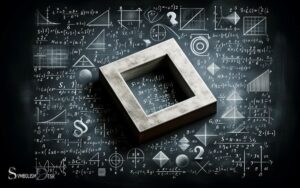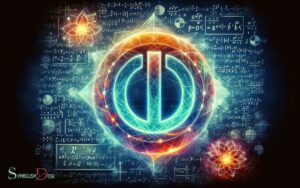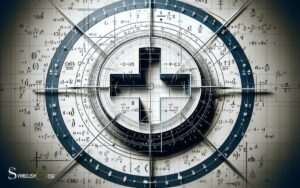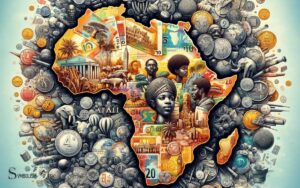Math Symbol for Rational Numbers: Set of All Numbers!
The symbol for rational numbers is ‘ℚ’, which represents the set of all numbers that can be expressed as a fraction where both the numerator and the denominator are integers, and the denominator is not zero.
Rational numbers include all the fractions and integers since every integer can be expressed as a fraction with a denominator of 1. The symbol ℚ originates from the word ‘quotient’, which is the result of dividing one integer by another.
Here are key points about rational numbers:
For example, 1/2, -4/7, and 5 (which is 5/1) are all rational numbers. Rational numbers and their unique symbol ℚ are fundamental in mathematics, signifying a vast set of quantifiable values.
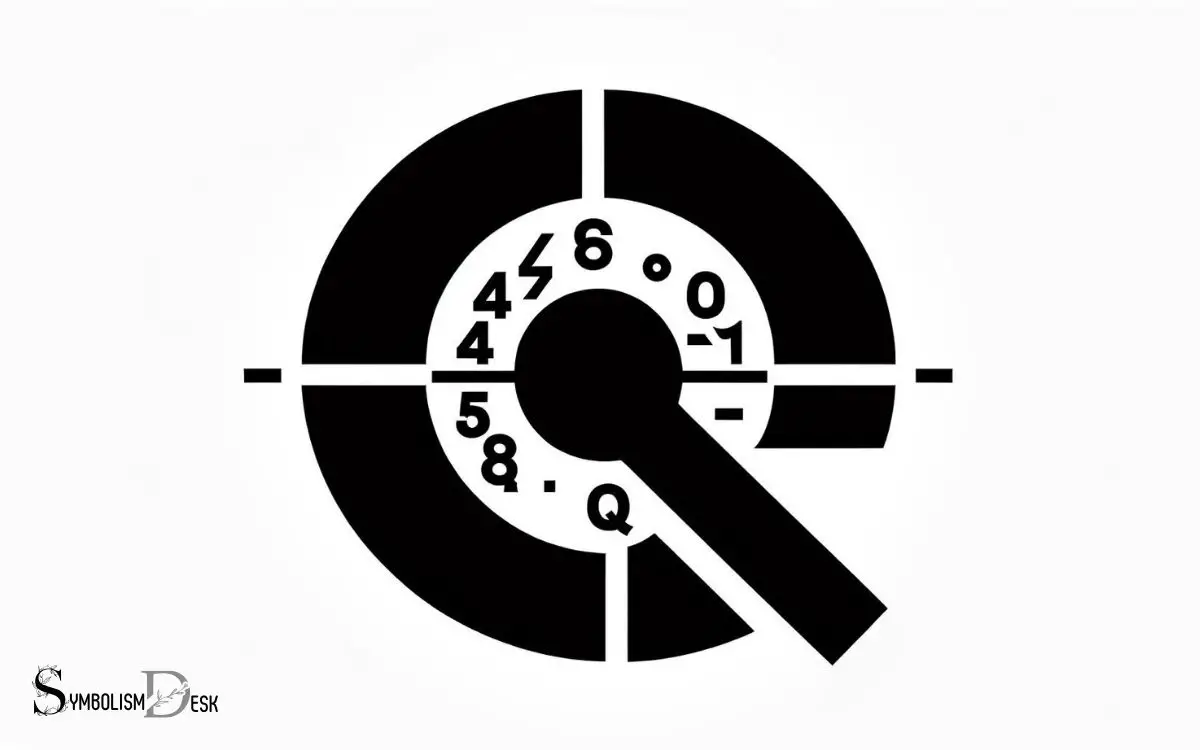
Key Takeaway
The Concept of Rational Numbers
The concept of rational numbers can be understood through their representation as fractions. A rational number is any number that can be expressed in the form of a fraction, where the numerator and denominator are both integers, and the denominator is not zero.
This includes numbers such as 1/2, 5/4, -3/7, and so on. Rational numbers can also be represented as terminating or recurring decimals.
Understanding rational numbers is crucial in various mathematical operations such as addition, subtraction, multiplication, and division.
They are essential in everyday applications like measurements, calculations, and comparisons. Rational numbers play a fundamental role in mathematics and are a key concept for anyone seeking a deeper understanding of the numerical world.
Understanding Rational Number Notation
Understanding rational number notation involves familiarizing oneself with various ways to represent rational numbers, such as fractions, decimals, and percentages.
It also entails recognizing common notations used to denote rational numbers, including the use of a horizontal line, a colon, or the “R” symbol.
Additionally, understanding the rational number symbol and its significance in mathematical expressions is essential for effectively working with rational numbers.
Rational Number Representation
Rational number representation involves the precise notation and abstraction of rational numbers within mathematical contexts. Understanding rational number notation is essential for effectively working with these numbers in various mathematical operations.
The notation for rational numbers typically includes a numerator and a denominator, separated by a horizontal line. This representation allows for the clear identification and manipulation of fractions in equations and calculations.
Rational number notation also encompasses the use of decimals or mixed numbers to express these quantities in different forms.
Additionally, understanding the concept of recurring and terminating decimals is crucial in rational number representation.
By mastering rational number notation, individuals can confidently work with these numbers in mathematical problem-solving and real-world applications.
Common Rational Number Notations
A crucial aspect of rational number notation involves the clear identification and manipulation of fractions in equations and calculations, allowing for precise representation within mathematical contexts.
Common rational number notations include the use of the fraction bar, where the numerator and denominator are separated by a horizontal line, representing division.
Another common notation is the use of a colon or slash to separate the numerator and denominator.
Decimal notation, where rational numbers are represented as terminating or repeating decimals, is also widely used.
Additionally, rational numbers can be represented in the form of mixed numbers, combining whole numbers with proper fractions.
Understanding these common notations is essential for working with rational numbers in mathematical expressions and problem-solving, providing a clear and standardized way to represent and manipulate these quantities.
Rational Number Symbol
How are rational numbers symbolically represented in mathematical notation?
- Fraction Form: Rational numbers are often represented in the form of a fraction, where the numerator and denominator are both integers.
- Decimal Form: Rational numbers can also be represented in decimal form. In this representation, the decimal either terminates or repeats.
- Set Notation: In set notation, rational numbers are represented as part of the set of all numbers that can be expressed as a ratio of two integers.
Understanding rational number notation is crucial for effectively working with these numbers in mathematical contexts.
By representing rational numbers symbolically, mathematicians and students can manipulate and compare these numbers with precision, leading to clearer communication and more accurate calculations.
The Symbol for Rational Numbers
Representing rational numbers in mathematics is commonly done using the symbol ‘Q.’ The rational number symbol ‘Q’ stands for quotient, and it represents the set of all numbers that can be expressed as the ratio of two integers, where the denominator is not zero. Understanding blackboard bold notation is essential for working with rational numbers, as it provides a clear and concise way to represent them in mathematical equations. This notation is commonly used in algebra, calculus, and other branches of mathematics to distinguish between different sets of numbers. By learning to recognize and interpret blackboard bold notation, students can more easily work with and manipulate rational numbers in various mathematical contexts.
The symbol ‘Q’ is widely used in mathematical equations, proofs, and discussions to denote the set of rational numbers. It is an essential concept in number theory, algebra, and various other mathematical fields.
The table below illustrates the representation of rational numbers using the symbol ‘Q’ in comparison to other number sets.
| Number Set | Symbol |
|---|---|
| Natural Numbers | N |
| Whole Numbers | W |
| Integers | Z |
| Rational Numbers | Q |
Understanding the symbol ‘Q’ is fundamental for grasping the concept of rational numbers and their applications in mathematical contexts.
Application of Rational Number Symbol
What practical applications in mathematics and real-world scenarios utilize the symbol ‘Q’ to represent rational numbers?
The symbol ‘Q’ representing rational numbers is widely used in various mathematical and real-world applications, including:
- Mathematical Equations: The symbol ‘Q’ is commonly used in mathematical equations to denote the set of rational numbers, enabling concise representation and manipulation of these numbers in various mathematical operations.
- Data Analysis: In statistics and data analysis, the symbol ‘Q’ is utilized to represent rational quantities, facilitating the accurate representation and manipulation of rational data points and measurements.
- Financial Calculations: In finance and economics, the symbol ‘Q’ is employed to denote rational numbers in calculations related to interest rates, investments, and financial modeling, ensuring precise and clear representation of these values.
Rational Numbers in Mathematical Operations
When performing mathematical operations, rational numbers play a crucial role. Whether it’s addition, subtraction, multiplication, or division, rational numbers are involved in various arithmetic operations.
Understanding how rational numbers interact with calculations is essential for mastering mathematical concepts.
Rational Numbers in Operations
Rational numbers are frequently utilized in various mathematical operations, providing a foundation for calculations in arithmetic, algebra, and beyond. Understanding their role in operations is crucial for mathematical proficiency.
Here are some key points to consider:
- Closure Property: When rational numbers are added, subtracted, multiplied, or divided, the result is always a rational number.
- Application in Equations: Rational numbers are extensively used in solving equations, where operations involving fractions are common.
- Real-world Scenarios: Rational numbers are applied in practical situations such as measurements, finances, and statistics, making them essential for everyday problem-solving.
Recognizing the significance of rational numbers in operations is fundamental for mastering mathematical concepts.
Arithmetic With Rational Numbers
The symbol for rational numbers in mathematical operations is a fundamental component of arithmetic.
When performing arithmetic with rational numbers, it is important to understand how addition, subtraction, multiplication, and division apply to these numbers.
Addition and subtraction of rational numbers involve finding a common denominator, adding or subtracting the numerators, and simplifying the result.
Multiplication of rational numbers requires multiplying the numerators together and the denominators together, followed by simplifying the resulting fraction.
Division of rational numbers involves multiplying the first number by the reciprocal of the second number. It is crucial to simplify the resulting fraction after performing the operation.
Understanding these operations is essential for working with rational numbers in mathematical contexts, providing a solid foundation for more complex mathematical concepts.
Rational Numbers and Calculations
Upon mastering arithmetic operations with rational numbers, an understanding of their application in mathematical calculations is crucial for developing proficiency in advanced mathematical concepts.
When applying rational numbers in mathematical operations, it is essential to:
- Understand the rules for adding, subtracting, multiplying, and dividing rational numbers.
- Grasp the concept of finding the least common denominator to perform operations with fractions effectively.
- Recognize the significance of simplifying results to their simplest form to ensure accuracy and clarity.
These principles are precise, clear, and educational, providing a strong foundation for working with rational numbers in various mathematical contexts.
Understanding the practical application of rational numbers in calculations is fundamental for further mathematical studies and real-world problem-solving.
Representing Rational Numbers Symbolically
A common way to represent rational numbers symbolically is by using the fraction form, where a numerator and a denominator are separated by a horizontal line.
For example, 3/4 represents the rational number three-fourths. This form clearly denotes the relationship between the numerator and the denominator. It is precise and easily understandable, providing a clear visual representation of the rational number.
The numerator represents the number of equal parts being considered, while the denominator represents the total number of equal parts in the whole.
This representation is educational, particularly for those new to rational numbers, as it conveys the concept of a rational number as a ratio of two integers.
Understanding this symbolic representation is essential for working with rational numbers in various mathematical operations. It serves as a foundation for further exploration of their significance in mathematical contexts.
Significance of Rational Number Symbol
Continuing from the representation of rational numbers symbolically, it is essential to understand the significance of the rational number symbol in mathematical contexts.
The rational number symbol serves as a powerful tool in mathematics, providing a concise and standardized way to represent numbers that can be expressed as a ratio of two integers.
Its significance lies in:
- Standardization: The symbol provides a universal representation for rational numbers, ensuring clarity and consistency in mathematical communication.
- Efficiency: It allows for efficient and compact expression of rational numbers, simplifying calculations and reducing the complexity of mathematical expressions.
- Clarity: By using the rational number symbol, mathematicians can clearly distinguish between rational and other types of numbers, facilitating precision in mathematical reasoning and problem-solving.
Conclusion
The symbol for rational numbers serves as a key tool in representing and working with these numbers in mathematical operations.
It allows for clear and precise communication of the concept of rational numbers, enabling mathematicians to manipulate and solve problems involving these numbers efficiently.
Like a compass guiding a sailor through rough seas, the rational number symbol provides direction and clarity in navigating the vast ocean of mathematical concepts.

